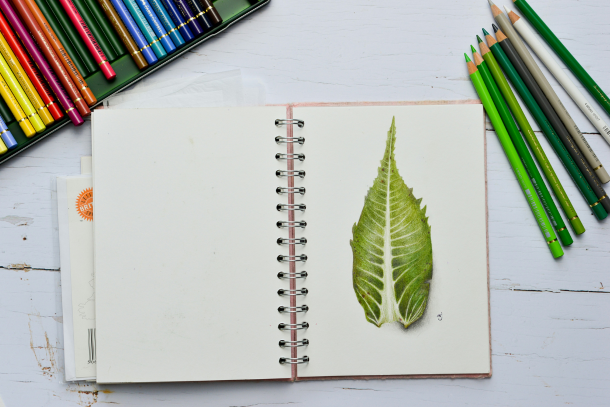Mindfulness Techniques to Reduce Stress in Your Daily Life

Mindfulness is a mental practice that involves focusing one's attention on the present moment while calmly acknowledging and accepting one's feelings, thoughts, and bodily sensations.
Its roots can be traced back to ancient Buddhist meditation techniques, but it has since evolved and been adapted into a secular practice widely used in modern psychology and wellness circles.
Importance of Mindfulness in Managing Daily Stress
In today's fast-paced world, stress is an all-too-common experience for many people. Mindfulness offers a valuable tool for managing this stress by helping individuals cultivate a sense of calm and clarity. By paying close attention to the present moment, mindfulness allows people to step back from their worries and anxieties, reducing the mental clutter that often contributes to stress. This practice has been shown to lower cortisol levels, improve emotional regulation, and enhance overall well-being.
The purpose of this article is to introduce readers to a range of effective mindfulness techniques that can be easily incorporated into everyday routines. Whether you are new to mindfulness or looking to deepen your practice, these techniques are designed to help you reduce stress and improve your quality of life. We will explore simple practices such as mindful breathing and mindful eating, as well as more advanced methods like loving-kindness meditation and Mindfulness-Based Stress Reduction (MBSR). By the end of this article, you will have a comprehensive toolkit of mindfulness strategies to help you navigate daily stresses with greater ease and resilience.
What is Mindfulness?
Definition and Origins
Mindfulness is the practice of being fully present and engaged in the current moment, aware of your thoughts, feelings, and surroundings without judgement. At its core, mindfulness involves paying attention to the present moment intentionally and with an open heart.
The roots of mindfulness can be traced back to ancient Buddhist meditation practices, where it was used as a path to enlightenment and spiritual awakening. The term 'mindfulness' itself is a translation of the Pali word 'sati', which means awareness, attention, and remembering. Over time, mindfulness has transcended its religious origins and has been adapted into a secular form, widely practised in modern life for its numerous benefits.
In contemporary settings, mindfulness has evolved into a valuable tool for enhancing mental well-being and reducing stress. It has been integrated into various therapeutic approaches, including Mindfulness-Based Stress Reduction (MBSR) and Mindfulness-Based Cognitive Therapy (MBCT), making it relevant and accessible to people from all walks of life.
Benefits of Mindfulness
Mindfulness offers a range of mental and physical health benefits. Regular practice can lead to reduced stress, anxiety, and depression. It helps improve focus, emotional regulation, and resilience. Physically, mindfulness can lower blood pressure, enhance sleep quality, and boost the immune system.
Scientific research has consistently supported the effectiveness of mindfulness for stress reduction. Studies have shown that mindfulness can decrease the production of cortisol, the stress hormone, and promote a sense of calm and relaxation. Brain imaging research has also demonstrated that mindfulness can alter brain structures and functions, enhancing areas related to attention, emotional regulation, and self-awareness.
Personal testimonials and success stories further highlight the transformative impact of mindfulness. Many individuals report feeling more balanced, less reactive, and better equipped to handle the challenges of daily life. These positive outcomes underscore the value of incorporating mindfulness into everyday routines, offering a practical approach to achieving greater mental and physical well-being.
Simple Mindfulness Techniques for Daily Life
Mindful Breathing
Explanation of Mindful Breathing and Its Benefits Mindful breathing involves paying close attention to your breath, observing each inhale and exhale without trying to change it. This practice helps anchor you in the present moment, reducing stress and promoting relaxation.
Step-by-Step Guide to Practice Mindful Breathing
- Find a quiet place and sit comfortably.
- Close your eyes and take a few deep breaths.
- Focus on your natural breathing pattern.
- Notice the sensation of the breath entering and leaving your nostrils.
- If your mind wanders, gently bring your focus back to your breath.
Tips for Incorporating Mindful Breathing Throughout the Day
- Practice for a few minutes upon waking up.
- Take mindful breathing breaks during work or study sessions.
- Use mindful breathing to calm yourself before bed.
Body Scan Meditation
Introduction to Body Scan Meditation and Its Purpose Body scan meditation involves mentally scanning your body from head to toe, observing any sensations without judgement. This practice promotes relaxation and body awareness.
Detailed Instructions on How to Perform a Body Scan
- Lie down or sit comfortably.
- Close your eyes and take a few deep breaths.
- Begin at the top of your head and slowly move down to your toes.
- Notice any areas of tension or discomfort.
- Breathe into each area, imagining the tension melting away.
Suggested Times and Settings for Practice
- Early morning or before bed.
- During a lunch break to recharge.
Mindful Eating
Description of Mindful Eating and Its Benefits for Stress Reduction Mindful eating involves paying full attention to the experience of eating, savouring each bite. This practice can reduce stress and improve digestion.
Guidelines for Practising Mindful Eating During Meals
- Eat slowly and without distractions.
- Notice the colours, smells, and textures of your food.
- Chew thoroughly and savour each bite.
Examples of How to Incorporate Mindful Eating into Daily Routines
- Start with one meal a day.
- Practise mindful eating during snacks.
Mindful Walking
Explanation of Mindful Walking and Its Advantages Mindful walking combines the benefits of mindfulness and physical activity, helping you stay present and reduce stress.
Steps to Practice Mindful Walking, Including Breathing and Sensory Awareness
- Walk slowly and focus on your breathing.
- Notice the sensation of your feet touching the ground.
- Observe your surroundings without judgement.
Ideal Locations and Times for Mindful Walking
- Parks or quiet streets.
- During breaks or after meals.
Mindful Listening
Understanding Mindful Listening and Its Impact on Relationships Mindful listening involves fully focusing on the speaker without interrupting or planning your response. This practice enhances communication and strengthens relationships.
Techniques for Practising Mindful Listening During Conversations
- Make eye contact and nod to show understanding.
- Avoid interrupting and listen to the speaker's words and emotions.
Tips for Improving Active Listening Skills
- Practise with a partner or during meetings.
- Reflect on the conversation afterwards.
Mindfulness Journaling
Introduction to Mindfulness Journaling and Its Benefits Mindfulness journaling involves writing down your thoughts and feelings to gain insight and clarity. This practice can reduce stress and promote self-awareness.
Prompts and Techniques for Effective Mindfulness Journaling
- Start with prompts like "Today I feel..." or "I am grateful for..."
- Write without judgement and let your thoughts flow.
How to Make Journaling a Regular Habit
- Set aside a few minutes each day.
- Keep your journal in a convenient location.
By incorporating these simple mindfulness techniques into your daily life, you can effectively reduce stress and enhance your overall well-being.
Advanced Mindfulness Practices
Loving-Kindness Meditation
Loving-kindness meditation, also known as metta meditation, is a practice that involves focusing on developing feelings of compassion and love towards oneself and others. This practice can significantly enhance emotional well-being by fostering positive emotions and reducing negative ones.
Overview of Loving-Kindness Meditation and Its Emotional Benefits
Loving-kindness meditation helps to cultivate empathy, reduce anger, and improve overall emotional health. By regularly practising loving-kindness meditation, individuals can build a greater sense of connection with others, leading to improved relationships and a more compassionate outlook on life.
Step-by-Step Guide to Practise Loving-Kindness Meditation
- Find a Quiet Space: Sit comfortably in a quiet place where you won't be disturbed.
- Focus on Your Breath: Take a few deep breaths to centre yourself.
- Begin with Yourself: Silently repeat phrases such as “May I be happy. May I be healthy. May I be safe. May I live with ease.”
- Expand to Others: Gradually extend these wishes to others, starting with loved ones, then neutral people, and finally, those with whom you have difficulties.
Suggested Phrases and Visualisations
Use phrases like “May you be happy,” and “May you be free from suffering.” Visualise these individuals receiving your warm wishes, surrounded by a light that represents your love and kindness.
Mindfulness-Based Stress Reduction (MBSR)
Explanation of MBSR and Its Development by Jon Kabat-Zinn
Mindfulness-Based Stress Reduction (MBSR) is a structured programme developed by Jon Kabat-Zinn in the late 1970s. It combines mindfulness meditation and yoga to help individuals manage stress, anxiety, pain, and other conditions.
Key Components of the MBSR Programme
- Mindfulness Meditation: Regular practice of mindfulness techniques.
- Body Awareness: Techniques to enhance body awareness and reduce physical tension.
- Group Discussions: Sharing experiences and learning from others in a supportive environment.
How to Find MBSR Courses and Resources
MBSR courses are widely available both in-person and online. Look for certified instructors and reputable organisations. Many universities and healthcare institutions offer MBSR programmes.
Yoga and Mindfulness
Yoga and mindfulness are intrinsically connected, both focusing on the union of mind and body.
Connection Between Yoga and Mindfulness
Yoga incorporates mindfulness through breath control, meditation, and physical postures, promoting a holistic approach to stress reduction and overall well-being.
Recommended Yoga Poses and Practices for Stress Reduction
- Child’s Pose (Balasana): Provides a gentle stretch and calms the mind.
- Corpse Pose (Savasana): Encourages deep relaxation and mindfulness.
- Cat-Cow Pose (Marjaryasana-Bitilasana): Combines movement with breath awareness.
Tips for Integrating Mindfulness into Yoga Practice
- Focus on Breath: Maintain awareness of your breath throughout your practice.
- Set Intentions: Begin each session with a mindful intention.
- Be Present: Concentrate on the present moment and listen to your body.
By incorporating these advanced mindfulness practices into your routine, you can deepen your mindfulness journey and further reduce stress in your daily life.
Tips for Incorporating Mindfulness into a Busy Schedule
Starting Small
It is important to begin with small, manageable practices when incorporating mindfulness into a busy schedule. Starting with brief exercises helps to build a habit without feeling overwhelming. Simple activities such as taking a few minutes each morning to focus on your breath, or practising mindful listening during conversations, can be effective. Other examples include a short body scan before bed, or spending a few moments savouring your tea or coffee in the morning. These small practices can make a significant difference and are easy to fit into a hectic day.
Creating a Mindfulness Routine
Establishing a daily mindfulness routine can help maintain consistency and motivation. Begin by setting aside a specific time each day for mindfulness practice, such as first thing in the morning or before bedtime. Gradually increase the duration as you become more comfortable with the practice. Use reminders like setting an alarm or using a mindfulness app to prompt you to practise regularly. Apps such as Headspace or Calm offer guided meditations and can be valuable tools in developing a routine.
Mindfulness at Work
Practising mindfulness in the workplace can enhance productivity and improve workplace relationships. Techniques include taking short, mindful breaks to focus on your breathing or stretching. Before starting a task, spend a moment to centre yourself and set an intention. Engage in mindful listening during meetings to foster better communication. Examples of mindful activities at work include a two-minute breathing exercise at your desk or a short, mindful walk during lunch.
Mindfulness with Family
Involving family members in mindfulness practices can be beneficial for everyone. Shared mindfulness activities can improve family dynamics and create a sense of togetherness. Simple exercises suitable for all ages include family meditation sessions, practising gratitude by sharing things you are thankful for, or going on a mindful nature walk together. Encouraging children to engage in mindful colouring or breathing exercises can also be a fun and effective way to introduce mindfulness to younger family members.
Incorporating mindfulness into a busy schedule is achievable by starting small, creating a routine, practising at work, and involving family members. These tips can help integrate mindfulness into daily life, leading to reduced stress and enhanced overall well-being.
Common Challenges and How to Overcome Them
Dealing with Distractions
Strategies for Minimising Distractions During Mindfulness Practice
One of the primary challenges in practising mindfulness is dealing with distractions. To minimise distractions, choose a quiet and comfortable location for your practice. Inform household members of your intention to practise mindfulness to ensure a disturbance-free environment. Turn off or silence electronic devices, and consider using earplugs or white noise machines if external noises are unavoidable.
Tips for Refocusing When Distractions Occur
Despite best efforts, distractions are inevitable. When they occur, gently acknowledge them without judgement and bring your focus back to your breath or the present moment. Use a simple phrase like "thinking" or "distraction" to label the interruption, and then return your attention to your mindfulness practice. It’s important to be patient and not to criticise yourself for getting distracted.
Maintaining Consistency
Advice for Staying Committed to a Mindfulness Routine
Consistency is key to reaping the benefits of mindfulness. Set a specific time each day for your practice and incorporate it into your daily routine. Begin with short sessions and gradually increase the duration as you become more comfortable. Keeping a mindfulness journal can help track your progress and maintain motivation.
Solutions for Common Obstacles and Setbacks
Common obstacles such as lack of time, motivation, or immediate results can hinder consistency. Overcome these by setting realistic goals and reminding yourself of the long-term benefits. If you miss a session, avoid self-criticism and simply resume your practice the next day. Joining a mindfulness group or class can also provide support and accountability.
Managing Expectations
Understanding that Mindfulness is a Gradual Process
Mindfulness is a gradual process, and it’s essential to manage expectations. Recognise that progress may be slow and that some days will be more challenging than others. The benefits of mindfulness accumulate over time, and patience is crucial.
Encouragement to Be Patient and Kind to Oneself
Be kind and patient with yourself as you navigate your mindfulness journey. Celebrate small victories and progress, no matter how minor they may seem. Remember, the goal of mindfulness is not perfection but rather a steady and compassionate practice that enhances your overall well-being.
By addressing these common challenges and implementing practical solutions, you can develop a sustainable mindfulness practice that effectively reduces stress and improves your quality of life.
Throughout this article, we have explored various mindfulness techniques that can be seamlessly integrated into your daily routine to help reduce stress. These techniques include mindful breathing, body scan meditation, mindful eating, mindful walking, mindful listening, and mindfulness journaling. Each method offers unique benefits and can significantly enhance your mental and physical well-being when practised regularly. Additionally, advanced practices such as loving-kindness meditation, Mindfulness-Based Stress Reduction (MBSR), and incorporating mindfulness into yoga can further deepen your relaxation and emotional resilience.
We encourage you to embark on your mindfulness journey and experiment with different techniques to discover what works best for you. Remember that even small, consistent efforts can lead to significant improvements in your stress levels and overall quality of life. Mindfulness is a gradual process, and it is important to be patient and kind to yourself as you develop your practice.
By following the techniques and advice outlined in this article, you can cultivate a regular mindfulness practice that will help you manage stress more effectively and improve your overall well-being. Embrace the opportunity to bring mindfulness into your daily life and experience the transformative benefits it can offer.
Related to this article are the following:
- Grounding Techniques for Anxiety: A Comprehensive Grounding Guide
- The Magic Touch: How Massage Enhances Wellbeing and Promotes Restful Sleep
- Unlocking the Power of Healing with a Deep Tissue Massage
- Revolutionizing Workplace Wellness: An Enthusiast's Guide to Office Massage Chairs
- How mindfullness is helping your wellbeing
I do hope you have enjoyed this article and hope that you will subscribe to my newsletter so you can get the latest information about all things naturally relaxing.
Stay in touch, join the Naturally Relaxing Newsletter
Newsletter Signup
Post Your Comments
or post as a guest
Be the first to comment.
Latest articles in Lifestyle

DIY Natural Beauty Treatments for Glowing Summer Skin

10 Natural Remedies to Combat Summer Allergies

How to Create a Relaxing Outdoor Space for Summer

Hydration and Wellness: Natural Ways to Stay Hydrated in Summer

Nurturing Serenity: Mastering the Art of Nature Drawing for Relaxation and Mindfulness






